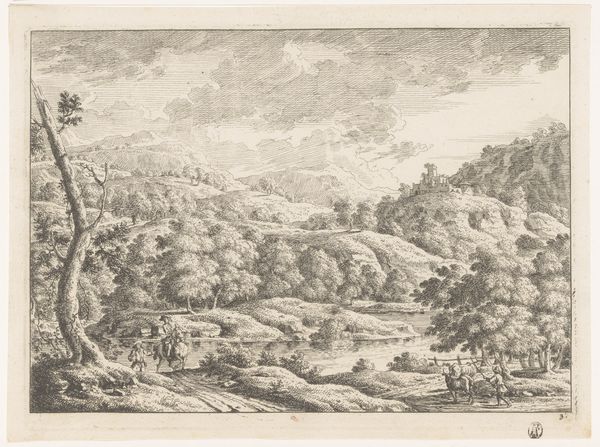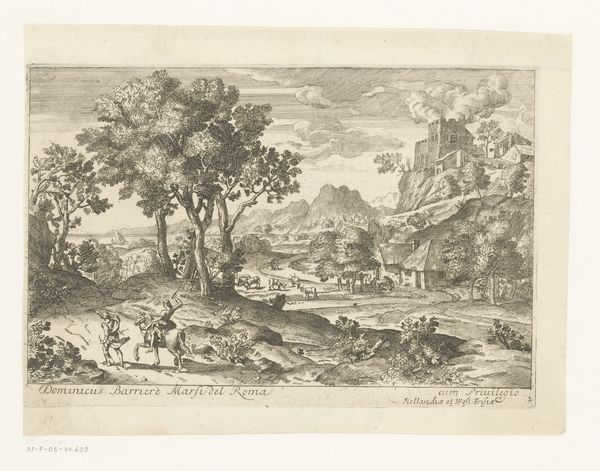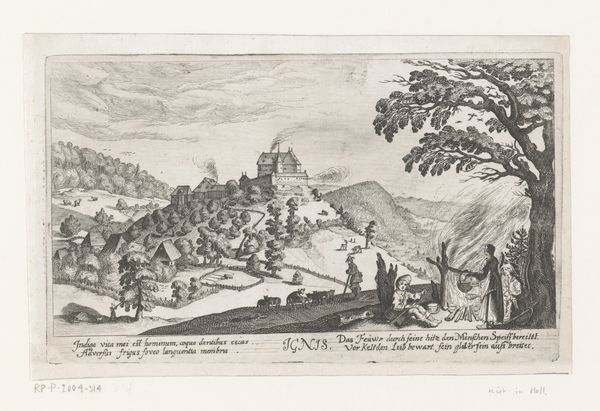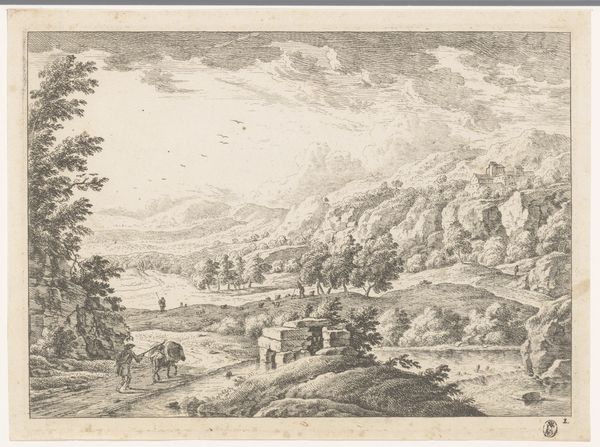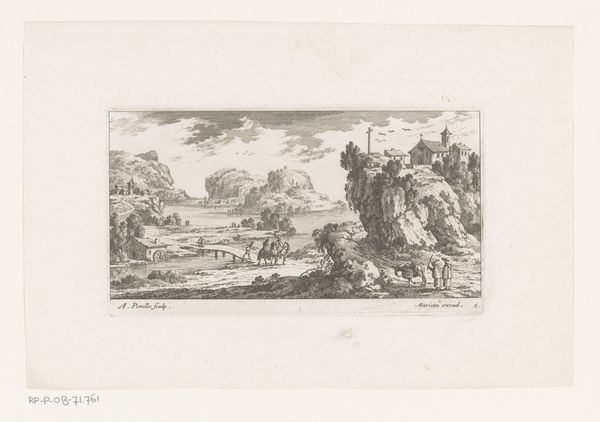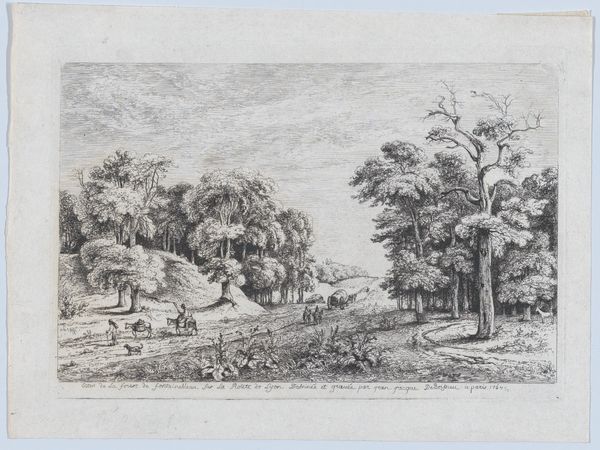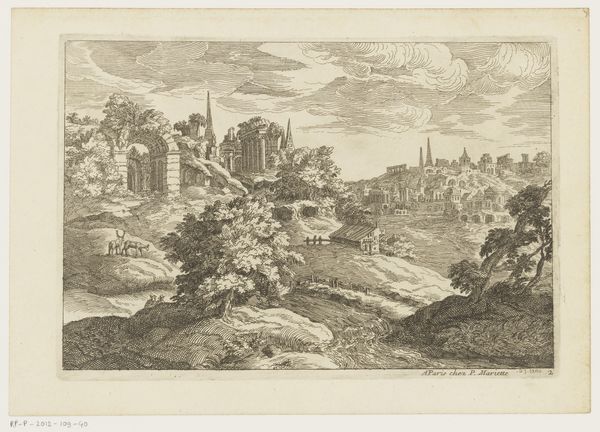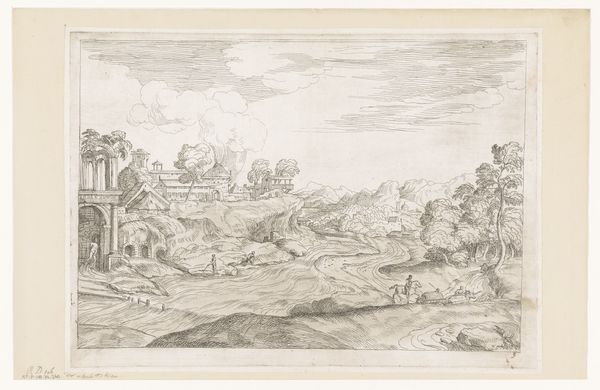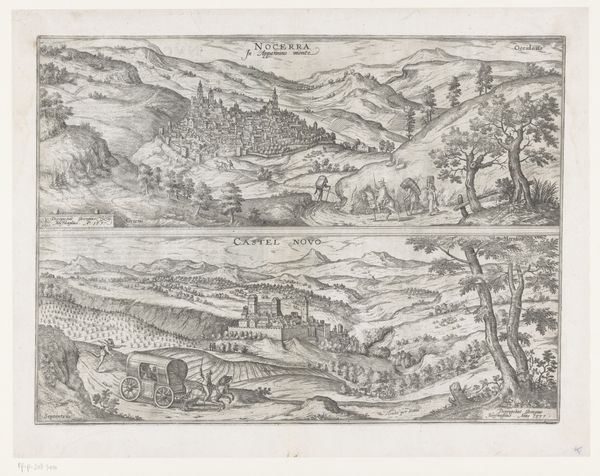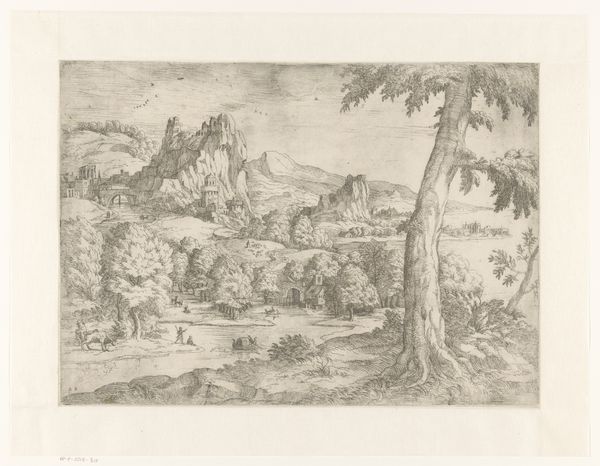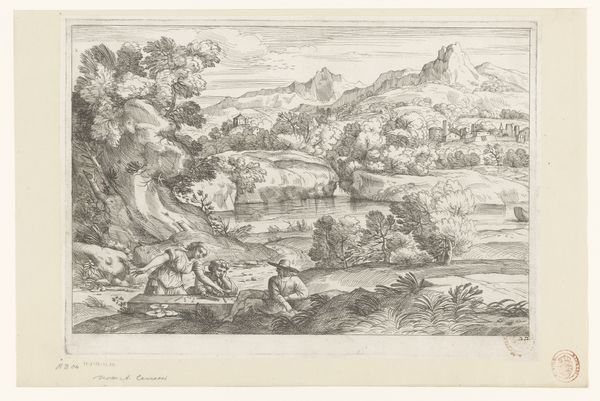
drawing, print, paper, ink, pen, engraving
#
drawing
#
baroque
#
ink paper printed
# print
#
pen sketch
#
pencil sketch
#
old engraving style
#
landscape
#
paper
#
ink
#
pen-ink sketch
#
pen
#
engraving
Dimensions: height 286 mm, width 402 mm
Copyright: Rijks Museum: Open Domain
Curator: Here we have "Landscape with Figures in a Boat," an engraving by Jean-Baptiste Corneille, dating roughly between 1659 and 1695. Its Baroque sensibilities evoke pastoral ideals. Editor: Immediately striking is the etching's expansive vista, the meticulous linework that crafts depth. The tonal range, achieved solely through line density, creates an immersive atmosphere. Curator: Indeed, note the variance in line weight—thicker lines delineate foreground elements, grounding the composition, while finer lines soften the distant hills, reinforcing spatial recession. The method points directly to its reliance on traditional craft practices of drawing, and specifically to pen-and-ink media on paper as both process and form. Editor: It is a print, don't forget, derived through laborious methods of cutting and etching. To understand its art, you must consider not just what it represents but how each line transfers skilled manual labor and learned visual idioms from copperplate to paper through mechanical reproduction. Think about how these etched valleys may have signified contemporary struggles between feudalistic forms of agricultural labor and a newly burgeoning class of landholders. Curator: But I'm also captivated by the compositional rhythm. The eye traverses from the foreground figures, along the meandering waterway, ultimately to the hilltop settlement—a masterful orchestration of pictorial space! The engraving transforms ink, paper, and labor into an ideational pastoral utopia. The very materials give substance to abstract forms, and transform thought into perceivable reality. Editor: You can't ignore how print media made landscapes more accessible to those who could not experience them in person. Think of the work necessary, not just in artistic creation, but to produce many copies: paper making, inking, pressing—each stage embedded in an intricate web of materials, processes and, critically, human energy. Curator: A necessary and insightful consideration, certainly. Editor: Ultimately, considering Corneille's landscape reminds us of how interconnected things were. We still appreciate it today thanks to the dedication of all the trades it required.
Comments
No comments
Be the first to comment and join the conversation on the ultimate creative platform.
